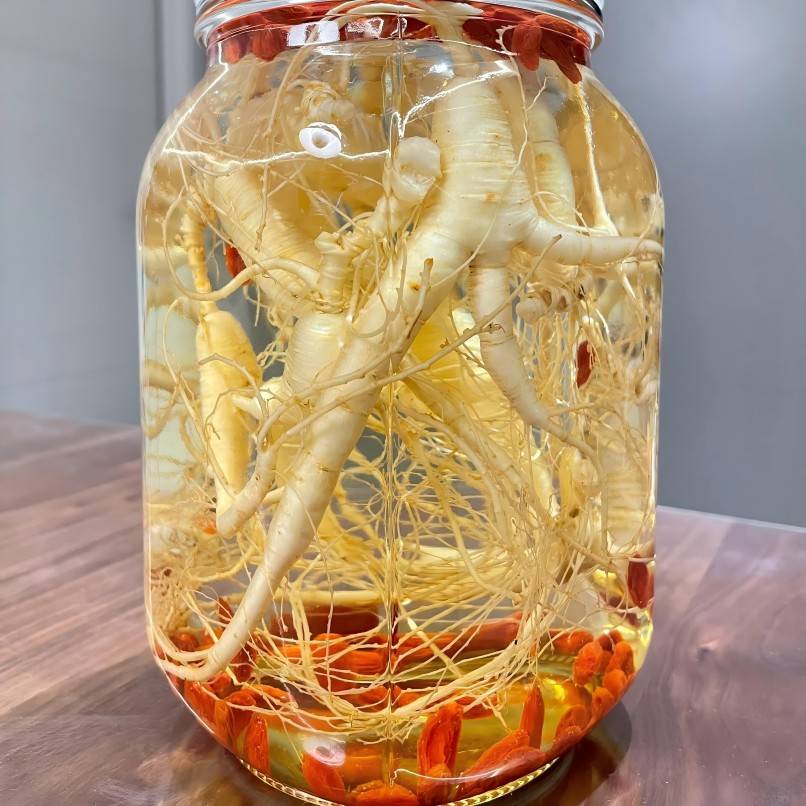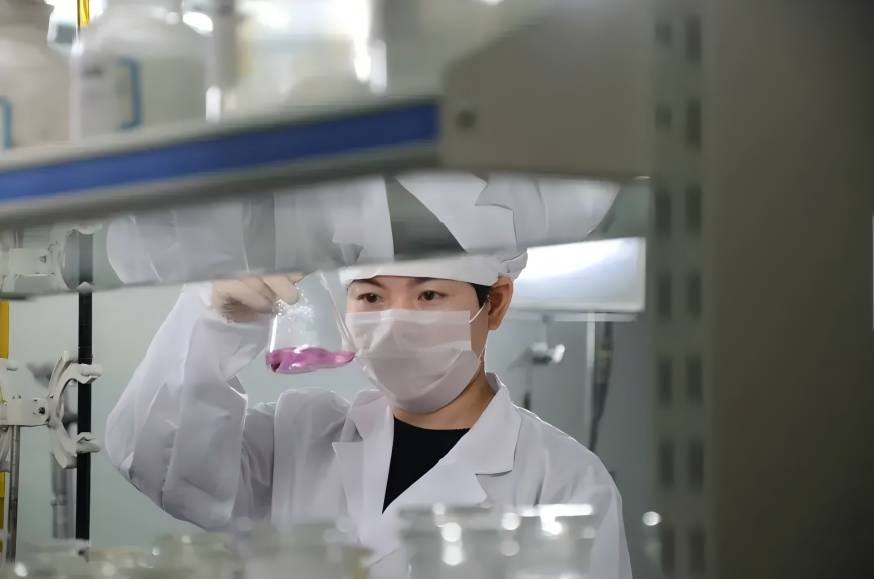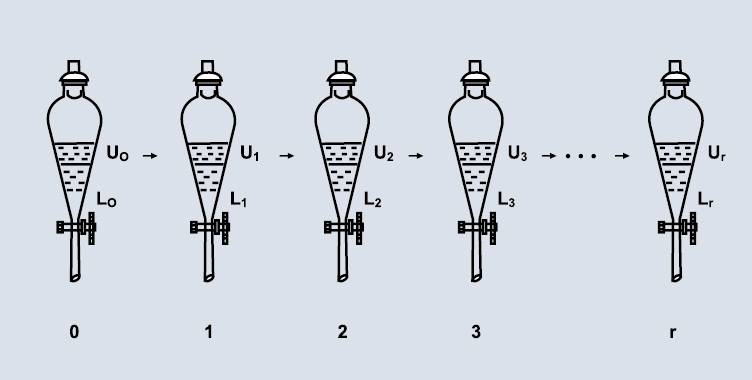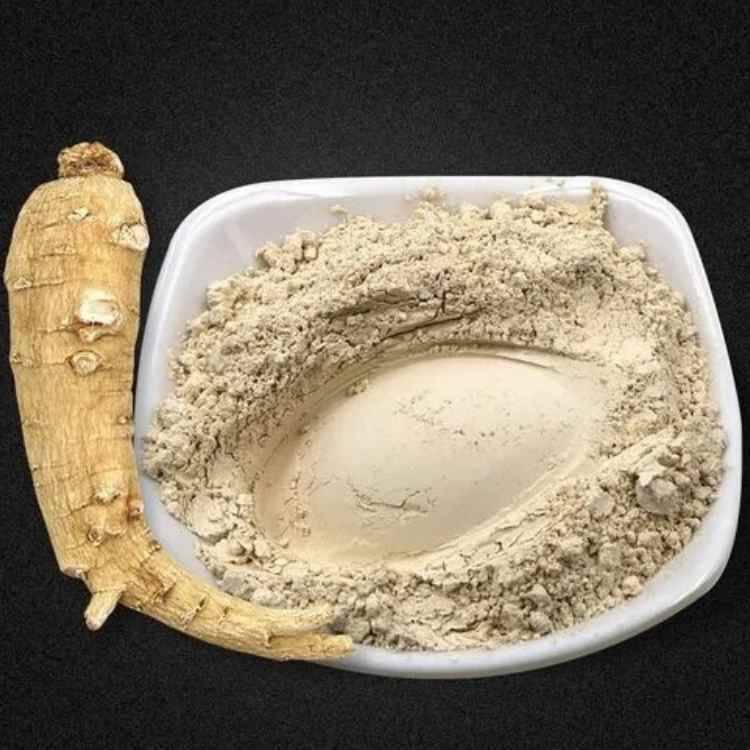진세노사이드 (Ginsenoside)의 추출방법은?
인삼 (파낙 스인삼C.A. Meyer) is a perennial herb in 이family Araliaceae. It is a traditional precious Chinese medicine 와the effects 의tonifying qi 그리고producing blood, strengthening the positive 그리고dispelling the negative. Ginsenosides are one 의the main active ingredients in ginseng, accounting 을about 4% 의the total mass 의ginseng. They have the effects 의enhancing the human immune system, anti-aging, anti-fatigue, 그리고treating cardiovascular diseases, and have now become the main ingredient in some special effect medicines. Extracti에and 분리technology is crucial to the efficient 추출and 농도의ginsenosides에서ginseng and the purification of preparations 에 의해removing as many impurities as possible. This paper reviews the reported 추출and separation methods of ginsenosides, 와the aim of providing a reference for the extraction and separation of ginsenosides.

ginsenosides에 대한 추출 방법 1
1.1전통적인 추출 방법
1.1.1 끓이는 방법
The decoction 방법mainly uses water as the extraction solvent. The medicinal material is heated and boiled for a certain period of time to obtain a decoction. This needs to be repeated many times and is mainly used to extract the better water-soluble components of Chinese herbal medicines. It is suitable for medicinal materials whose active ingredients are soluble in water and not sensitive to heating. It is one of the earliest and most commonly used extraction methods for extracting Chinese herbal medicine components. Chen Ali et al. used the extraction rates of ginsenosides Rb1, Re, and Rg1 as the evaluation indicators, and used an orthogonal test method to optimize the boiling extraction conditions of ginseng. The results showed that the highest extraction rate of ginsenosides was obtained by boiling 8 times the mass of ginseng in water for 2 times, each time for 1 hour [1].

마트레이더법 1.1.2
마타이징 방법은 약재를 like 용해 like 용해 원리에 따라 상온 또는 가열된 조건에서 용매에 담가 약재에서 활성 성분을 추출하는 것이다.장춘홍 등은 추출온도 60 °C, 교반시간 2시간, 교반액의 10배의 용매량으로 교반법을 사용하여 ginsenosides를 추출하였으며, 최대 총 사포닌 수율이 8.33% [2] 이었다.손광지 등은 용매다수, 추출시간, 추출횟수, 용매의 부피분율이 propanoyl ginsenosides의 추출율에 미치는 영향을 조사하여 최적의 추출공정을 결정하였다 [3].
역류법 1.1.3
역류법에서는 유기용매를 추출용매로 사용한다.약재를 가열하여 휘발성 용매를 증류하여 제거한 후, 응축되어 추출기로 돌아와 활성 성분이 완전히 추출될 때까지 추출 주기를 계속한다.현재 실험실에서 진세노사이드를 추출하기 위한 전통적인 역류 작업은 80% 메탄올을 (75 ± 1) °C에서 3 h 동안 역류하고 4회 반복하는 것이다.양광준 등은 ginsenosideRg1과 ginsenoside Re의 총 함량을 지수로 사용하였으며, 여러 공정을 비교 및 종합적으로 분석하여 역류 추출 공정이 가장 효과적인 것으로 나타났다 [4].장링 등은 다양한 추출공정이 인삼의 유효성분 함량에 미치는 영향을 연구하고 역류 추출을 위한 최적의 추출공정 조건을 결정하였다 [5].Hao Shaojun 등은 ginsenosides의 함량을 평가 지수로 사용하였으며 직교 검정법을 사용하여 최적의 추출 과정을 최적화하였다 [6].Kim 등은 ethanol 역류법에 대한 최적공정을 최적화하기 위해 diol-type과 triol-type 사포닌의 추출을 지수로 사용하였다 [7].
Soxhlet 추출법 1.1.4
The medicinal material is packed in gauze or filter paper and placed in the Soxhlet extraction extraction vessel. A certain amount of extraction solvent is added to the flask, heated and kept boiling. The solvent vapor condenses and refluxes into the extraction vessel to come into contact with the medicine. After that, the active ingredients dissolve in the solvent. After the solvent reaches a certain volume, the solvent that has dissolved the active ingredients is refluxed into the flask. the solvent is reheated and evaporated, and after cooling, it is re-exposed to the medicine to extract it in a cycle. Zhang Jing et al. took 2 g of ginseng powder및 60 mL의 메탄올을 첨가 하였다.Soxhlet 추출기에서 8시간 동안 추출한 후, 전체 인삼 사포닌 함량을 분광광도법으로 측정한 결과 3.27% [8]로 나타났다.Wood 등은 진세노사이드 (ginsenoside)를 효과적으로 추출하기 위해 80~90 °C에서 Soxhlet 추출법을 사용하였다 [9].Qu 등은 Soxhlet 추출기에 미국 인삼 샘플 500 mg을 넣고 70% 에탄올 [10]로 진세노사이드 (ginsenosides)를 추출했다.
1.2 현대적 추출방법
초임계 유체 추출 1.2.1
온도와 압력이 물질의 임계점을 넘을 때 형성되는 단상 상태를 초임계유체라고 한다.초임계유체는 액체와 비슷한 밀도와 낮은 점도, 강한 확산성을 가지고 있어 비교적 강한 용해도를 가지며 빠른 물질전달로 효율적인 추출이 가능하다.장르 등은 초임계 유체 추출법을 이용하여 ginsenosides Rh1과 Rh2 [11]를 추출하였다.Luo 등은 초음파를 이용한 초임계 유체 추출을 통해 높은 수율 [12]의 진세노사이드를 얻었다.Wood 등은 미국산 인삼에서 ginsenoside의 초임계 유체 추출을 위한 수정제로 methanol과 DMSO를 사용하여 전체 사포닌의 90%를 추출하였다 [9].Wang 등은 초임계 유체에 의해 추출되는 진세노사이드의 수율이 온도가 증가함에 따라 증가함을 발견하였다 [13].

1.2.2 폼 분리 방법
거품분리법은 기포 표면에 존재하는 물질의 흡착특성 차이를 이용해 분리하는 기술이다.인삼 사포닌은 계면활성제의 특성을 갖고 있기 때문에 휘저거나 가스가 통과되면 안정적인 거품을 낼 수 있어 부유 분리기술을 이용해 분리 · 농축할 수 있다.수 등은 발포분리법을 이용하여 Rb1, Rb2 [14] 등 5 종류의 사포닌을 분리, 농축하였다.Zhang Dajia 등은 폼 분리를 이용하여 ginsenosides Rb1, Rb2, Rd, Rc 및 Rf를 분리하였다 [15].왕유탕 등은 인삼 추출물 [16]에서 다이올 형태의 진세노사이드를 분리, 농축하기 위해 동적 폼 부직포를 사용하였다.장 등은 미국 인삼 뿌리에서 미량의 사포닌을 분리하기 위해 발포부유-고체상 추출법을 사용하였다 [17].
초음파 보조 추출 1.2.3
Ultrasonic-assisted extraction is a process that applies the combined effects of cavitation, vibration, crushing, and agitation generated by ultrasound to traditional Chinese medicine extraction to achieve efficient and rapid extraction. Zhang Chongxi et al. compared the traditional methods of water decoction, warm soaking, ethanol reflux, microwave-assisted extraction, and ultrasonic-assisted extraction, and the results showed that the ultrasonic method was the best [18]. Zhang Xianchen et al. used orthogonal design to determine the content of ginsenosides under different ultrasonic treatment conditions by colorimetry, and optimized the ultrasonic extraction process of ginsenosides [19]. Wu et al. found that ultrasonic-assisted extraction with water, methanol, and n-butanol as solvents at 38.5 kHz is three times faster than traditional extraction [20].
마이크로파 보조 추출 기술 1.2.4
마이크로파 보조 추출은 마이크로파를 이용하여 추출 시스템에서 용매를 가열하여 추출하려는 식물 시료에 있는 활성 성분이 분리되어 용매에 접촉한 상태로 들어가게 된다.이 기술은 주로 마이크로파 가열 효과를 이용해 추출과 분리 과정을 완성한다.추출된 물질이 흡수한 마이크로파 에너지는 세포의 내부 온도를 급격히 상승시켜 세포가 파열되고 활성 성분이 용매에 녹게 된다.
권 교수 등은 반응표면방법론 [21]을 이용하여 전자파를 이용한 인삼 사포닌 추출 조건을 최적화하였다.Shu 등은 마이크로파 보조 추출에 마이크로파 강도, 추출 시간 및 기타 요인이 미치는 영향을 조사하였다 [22].Shi 등은 전자파를 이용한 추출법을 이용하여 인삼뿌리에서 Rg1, Re, Rb1등 7 종의 진세노사이드와 7 종의 다른 진세노사이드를 전자파를 이용한 추출법 [23]을 이용하여 분리하였다.Wang 등은 가압 마이크로파 보조 추출법을 이용하여 인삼뿌리와 미국인삼 시료를 추출하고, 추출시간, 압력, 용매 등이 추출수율에 미치는 영향을 조사하였다 [24].쉬웨이 등은 전자파를 이용한 추출 기술을 이용해 인삼뿌리에서 Rg1, Re, Rb1, Rc, Rb2, Rd 등 6가지 진세노사이드를 빠르고 효과적으로 추출해 분리했다 [25].
고압 및 초고압 추출 1.2.5
고압 및 초고압 (100 MPa 이상) 추출은 추출 용매와 한약의 혼합물에 정수압을 가한다.식물세포내외의 압력이 평형상태에 도달한후 압력은 신속히 방출되여 세포가 투과되게 한다.세포내의 활성성분은 세포의 여러 세포막을 통과하여 세포외 추출액으로 옮겨지고, 이를 통해 활성성분을 추출하는 목적을 달성하게 된다.초임계 추출은 최단 시간 내에 최고의 추출 효율을 얻을 수 있습니다.조업을 적절히 수행할 경우 순수한 추출물을 얻을 수 있으며, 상온에서 추출을 수행할 수 있어 열적으로 불안정한 물질의 분리에 도움이 된다.
진세노사이드 추출에는 고압과 초임계 추출이 적용되어 왔다.천루이잔 등은 초고압법 [26]을 이용하여 50% 에탄올의 용매, 압력 500 MPa, 추출시간 2분의 조건에서 초임계 추출법을 이용하여 진세노사이드를 추출하였다.첸 등은 초고압을 이용해 상온에서 진세노사이드를 추출하고 균일설계법 [27]을 이용해 추출공정 조건을 최적화했다.Lee 등은 고압추출과 열추출 조건에서 총 ginsenoside와 ginsenoside 대사산물의 수율을 비교한 결과, 고압추출의 수율이 더 높게 나타났다 [28].
1.3 새로운 방법
생체 모방 추출법 1.3.1
생체모방 추출법은 약물대사의 기본 원리를 바탕으로 위장관계의 in vitro 시뮬레이션을 이용하여 ginsenoside를 추출한다.천신 등은 인삼 초미분말을 원료로 사용하고 생체 모방 용매와 물을 추출 용매로 하여 진세노사이드 (ginsenoside)를 추출했다 [29]..그 결과 생모방 추출법에 의한 총 ginsenosides, ginsenoside Rg1 및 ginsenoside Re의 추출효율이 물 추출법에 의한 추출효율보다 높게 나타났으며, 생모방 추출물의 크로마토그램을 통해 새로운 성분의 생산이 가능함을 알 수 있었다.
펄스 전기장 추출법 1.3.2
The pulsed electric field extraction method is a new extraction method that has been applied in food engineering to extract active ingredients 에서biological materials. Hou et al. used pulsed electric field extraction to extract ginsenosides Rg1, Re, Rb1, Rc, Rb2, and Rd 에서ginseng, and compared the method with hot reflux extraction and microwave-assisted extraction. The results showed that pulsed electric field extraction had the highest yield and the shortest time [30].
1.3.3 μsolid-phase dispersion 추출
고체상 분산추출의 공정은 먼저 시료를 연마분산제로 혼합한 후, 혼합물을 유리 컬럼에 적재하고, 마지막으로 적절한 용매를 이용하여 용출하여 추출하는 것이다.Shi 등은 인삼 잎의 추출을 위하여 고체상 분산추출법을 이용하여 Rb2, Rc, Rd와 같은 8 종의 ginsenoside를 추출하여 고온역류법과 비교하였다.그 결과 고체상 분산 추출법이 수율이 높고, 시간이 적게 걸리며, 용매 소모량이 적었다 [31].
2분리 방법
2.1 고체-액체 분리
진세노사이드는 일반적으로 고체-액체 크로마토그래피를 이용하여 분리된다.메탄올이나 에탄올로 시료를 한 번 또는 여러 번 추출한 후 추출물을 채취하여 혼합하여 진공 건조시키는 방법으로 추출한다.물에 떠 있는 잔류물은 n-헥산 층, 에틸아세테이트 층, n-부탄올 층, 물 층 등의 다른 유기 용매에 의해 분획으로 분리된다.n-hexane 층은 높은 분자량과 유수용성 불순물을 포함하고 있으며, 다른 분획들은 대성 수지 컬럼과 구배 용매 시스템을 이용한 실리카 겔 컬럼에서 크로마토그래피에 의해 더 작은 부분으로 분리된다.그 후 분획물은 다른 용매계를 이용한 노멀-상 실리카겔 컬럼 크로마토그래피, 역-상 실리카겔 컬럼 크로마토그래피, 겔 컬럼 크로마토그래피, 구배 용출에 의해 추가로 분리된다.분리된 물질은 준비 액체 크로마토그래피로 정제할 수 있으며, 화학적 및 분광학적 방법으로 구조를 확인할 수 있다.

2.2 액-액 분리
액-액 분할 기술은 불순물 용매에서 시료의 서로 다른 분할 비율에 의존하여 분리합니다.고체의 지지물이 없기 때문에 기존의 컬럼 크로마토그래피로부터 고정상물이 시료에 비가역적으로 흡착되는 문제를 피할 수 있다.액체-액체 분할에는 주로 고속대전류크로마토그래피와 원심분할크로마토그래피가 있다.
2.2.1 고속 반류 크로마토그래피 (HSCCC)
고속 반류 크로마토그래피 (HSCCC)는 진세노사이드의 준비 및 분리에 널리 사용된다.HSCCC분리 전에 인삼 시료를 유기시약으로 추출하고, 사포닌 분획은 대성 수지 컬럼, 역상 C-18 컬럼 및 중압 액체 컬럼 크로마토그래피를 통과하여 농축하고 농축한다.HSCCC 조건의 효과적인 선택에는 2 상 용매계의 선택과 시료를 용출하는 방법이 있다.이동 단계의 선택은 특히 중요합니다.최근 인삼제품 중 ginsenosides의 분리에 HSCCC를 적용한 결과 ginsenosides Rb1 [32-34], Rg1 [32, 34, 37], 회신[32, 34, 37], Rf [33], Rd [33-34], Rg3 [35], Rg5 [35], Rk1 [35], F4 [35], Ro [36] 가 분리되었다.
2.2.2원심 분할 크로마토그래피 (CPC)
원심분리 크로마토그래피 (Centrifugal 파티 션chromatography, CPC)는 연속적인 중력장에서 동작하는 흡착이 없는 액체-액체 분리 크로마토그래피이다.현재 클로로포름-메탄올-물의 용매 시스템은 CPC에서 성공적으로 사용되어 사포닌을 분리하고 있다.Wang 등은 CPC를 이용하여 에틸아세트-n-butanol-water (1:1:2) 용매계 [38]를 이용하여 미국인삼으로부터 ginsenosides Rc, Rb1 및 Re를 분리하였다.
2.3 새로운 방법
활성탄 선택흡착 2.3.1
쿠팡 등은 활성탄 선택흡착법을 이용하여 인삼꽃봉오리로부터 진세노사이드 Re를 분리, 정제하였다 [39].
강등 기술 2.3.2
The composition and function of ginseng 보통 두 가지 방법 ("separation-bioassay"또는"bioassay-guided separation") 중 하나를 사용하여 연구한다.추출된 성분이 생물학적으로 활성 여부를 증명하기 위해서는이 성분이 없는 추출물을 탈질 추출물로 준비할 필요가 있다.생물학적 활성을 비교하는 과정에서 탈지 추출물의 생물학적 활성이 원추출물보다 낮다면, 이는 해당 성분이 생물학적으로 활성 물질임을 의미한다.따라서 탈지 추출물을 얻는 방법은 화학적 크로마토그래피와 면역친화성 크로마토그래피 등 연구의 중점 중의 하나이다.
화학 크로마토그래피 2.3.2.1
Some demulcent extracts can be prepared by column chromatography. For example, in order to prepare the Rb1 demulcent extract, the ginseng flower 버드extract is first separated through a macroporous resin column 사용water and aqueous ethanol as the eluent. The aqueous ethanol stream is then separated by reverse-phase high-성능액체chromatography. The separation can be divided into three parts: the water part, the Rb1 part, and the other saponin part. The Rb1 part is removed, and the remaining water part and other saponin parts are combined to form the Rb1 demoulding extract. In order to improve efficiency, Liu et al. invented an online control 색 층 분석법technique to prepare the demoulding extract [40].
면역흡착제 크로마토그래피 2.3.2.2
면역흡착제 크로마토그래피 (Immunoadsorbent chromatography)는 크로마토그래피 방법으로, 고정상은 표적 화합물에 대한 단일클론항체이다.복잡한 혼합물로부터 미량 성분을 분리하고 농축하는 데 효과적인 방법입니다.표적 화합물에 대한 면역 친화성 크로마토그래피의 높은 선택성은 고정상과 교차 연결된 단백질에서 나온다.Tanaka 등은 ginsenosides Rb1 [41-43], Rg1 [44], Rd [45] 및 회신[46]에 대한 단일클론항체를 준비하였다.
추출물을 준비하는 화학적 크로마토그래피 방법과 비교하여 면역친화성 크로마토그래피 방법은 분석의 선택성을 높이고, 시료 준비 단계를 줄이며, 시료 운반체의 부피를 증가시킨다.반면 크로마토그래피 분리에 필요한 시간과 최적의 실험 조건을 선택하는 데 필요한 시간을 크게 단축시킵니다.그러나 면역친화성 크로마토그래피법은 단일클론항체 준비과정의 복잡성과 면역친화성 컬럼의 불안정성이라는 단점도 가지고 있다.
3 전망
기존의 추출 및 분리 방법 (decoction, reflux 등)은 각각 장점이 있지만 추출 시간이 길고 효율이 낮으며 용매 소비량이 많고 열적으로 안정하거나 휘발성 성분의 추출에는 도움이 되지 않는 등의 한계가 있다.따라서 사람들은보다 효율적이고 편리한 방법을 찾아 왔다.한약 추출 기술이 지속적으로 발전하면서 진세노사이드 추출 및 분리에 적합한 새로운 방법이 끊임없이 등장하고 있다.이들은 추출시간이 짧고 유기용매 사용량이 적으며 추출물의 선택성이 강하고 환경오염이 적은 장점이 있다.이를 통해 진세노사이드를 더욱 개발하고 효율적으로 이용할 수 있는 기반이 마련되었으며, 진세노사이드의 추출, 분리, 그리고 진세노사이드의 추가 개발 및 이용은보다 넓은 미래를 가질 것으로 생각된다.
참조:
[1] Chen A-li, Cui Y-xia, Zhou L-yan 등이 있다.직교시험법에 의한 인삼수 추출공정의 최적화.중국현대약물응용, 2009, 3 (9):21-22.
[2] 장씨홍, 장씨시, 정씨란 외.maceration에 의한 진세노사이드 추출의 최적공정에 관한 연구 (J.지린농업대학, 2003, 25 (1):73-74, 78.
[3] 손광지, 왕지안, 류지 등.직교실험을 이용한 인삼으로부터 propanoyl ginsenosides의 최적 추출공정 연구 (J.한약학, 2006, 37 (8):1194-1195.
[4] 양광준, 장바오장, 쑤도주안.일반적으로 사용되는 여러 가지 인삼 추출 공정의 비교 연구 [J.산동제약공업, 2002, 21 (4):8-8.
[5] 장링, 산웨이화, 량루이쉐 등.인삼 추출공정 연구 [J.시젠한의학, 2000, 11 (9):777-778.
[6] 하오샤오준, 장젠첸.Orthogonal design method for study of ginsenosides [J]에 대한 자료입니다.대한실용의학회지 2007, 6(1):48-50.
[7]Kim S J,Murthy HN,Hahn E J,et al.Parameters affecting the ex-traction of ginsenosides from the adventitious roots of 인삼 뿌리에서 추출된 ginsenosides (Panax 인삼 C.A.Meyer) [J.분리 및 정화기술, 2007,56(3):401-406.
[8] Zhang Jing, Chen Quancheng, Gong Xiaojie, 외.다양한 추출방법이 ginsenosides의 추출율에 미치는 영향.지린농업대학, 2003, 25 (1):71-72.
[9]Wood J A,Bernards MA,Wan W K,et. ginsenosides의 추출 수정된 초임계 카본 디옥스-이드 [J]를 사용한 북미 인삼에서.초임계유체 학회지,2006,39(1):40-47.
[10]Qu C L,Bai Y P,Jin X Q, 외 다양한 ginsenosides에 대한 연구 부품과 연령 of 파낙 스 quinquefolius l.다 [J다]음식 화학, 2009,115 (1):340-346.
[11] Zhang Le, Song Fengrui, Wang Qi 외.인삼으로부터 희귀 진세노사이드 초임계 이산화탄소 추출 [J.응용화학, 2010, 27 (12):1483-1485.
[12]Luo D L,Qiu T Q,Lu Q.초임계에서 초음파로 긴센-오사이드를 추출 이산화탄소 역 microemulsions다 [J다]저널 식품농업학,2007,87 (3):431-436.
[13] 왕 H C, 천 C R, 장 C J.진-생 뿌리의 이산화탄소 추출 머리 기름 and ginsenosides다 [J다]음식 화학, 2001년 72 『 한국정치학회보 』 (4):505-509.
[14]Xiu Z L,Zhang D J,Jia LY, 외. ginsenosides의 거품 분리 파낙스 인삼 [J]의.The Chinese Journal of Process Engineering, 2001,1 (3):289-293.
[15] 장다이아, 서우지룽, 린신화 외.신선인삼에서 건조방법이 ginsenosides의 추출 및 분리에 미치는 영향 (The effect of dry methods on The extract and separation of fresh 인삼)대한한의학통합학회지, 2004, 2 (4):292-294.
[16] 왕유탕, 류세보, 육천리 등.dynamic foam 부상에 의한 인삼 추출물의 diol-type ginsenosides의 분리 및 농축 (J.Journal of Chemical Sciences in Colleges and Universities, 2009, 30 (9):1713-1716.
[17] 장 R, 장 H Q, 우 L W, et 거품 알다. 부동 보조수단 -SPE for separation and concentration of 추적 ginsenosides다 [J다]크로마-tographia,2010,72(1/2):39-46.
[18] 장종시, 정율안, 장춘홍 외.인삼 총사포닌을 다양한 방법으로 추출하는 공정의 최적화.인삼연구, 2003, 15 (4):5-8.
[19] 장샹첸, 왕수민, 천광 외.인삼총사포닌의 초음파 추출공정에 관한 연구 (J.현대한의학의 연구와 실천, 2005, 19(6):55-57.
[20]Wu J,Lin L,Chau F T.초음파-인삼 추출 인삼 뿌리에서 추출한 사포닌과 배양한 인삼 세포 [J.「 Ultrason-ics Sonochemistry 」,2001,8 (4):347-352.
[21]Kwon J H, Belanger J M, Pare J R. 반응표면별 인삼성분에 대한 microwave as-sisted 추출 (MAP)의 최적화 방법론다 [J다]한국농식품화학학회지,2003, 51 (7):1807-1810.
[22] 슈이이, 코 M Y, 장 씨는 Y S.전자레인지요 extraction 인삼 뿌리에서 나온 진세노사이드 (ginsenosides)의 [J.Microchemical Journal,2003,74 (2):131-139.
[23]Shi W,Wang Y T,Li J,et al.a. investigation of ginsenosides in differences-ent parts and ages of 파낙 스인삼 [J].2007년 음식 화학, 102 (3):664-668.
[24]Wang Y T,You J Y,Yu Y,et al.Analysis of ginsenosides in Panax 인삼의 높은pressure microwave-assisted 추출 (J.식품화학,2008,110(1):161-167.
[25] 쉬웨이, 왕유탕, 취안신전 등.고성능 액체크로마토그래피-증발광 산란 검출에 의한 인삼 뿌리의 진세노사이드 측정 [J.분석화학, 2006, 34 (2):243-246.
[26] 천루이잔, 장쇼친, 왕창정.직교실험을 이용한 초고압으로 인삼에서 진세노사이드를 추출하는 공정의 최적화 연구 (J.한약재, 2005, 36(3):365-368.
Chen R Z,Meng F L,Zhang S Q, 외. 초고압 추출조건이 인삼으로부터 ginsenoside의 수량과 항산화 활성에 미치는 영향 (J.분리 및 정화기술,2009,66 (2):340-346.
[28]Lee H S,Lee H J,Yu H J,et al. high hydrostatic pressure 와의 비교 extraction 의 열 추출과 ginsenosides from 인삼 (Panax 인삼 C.A.Meyer) [J.한국농식품학회지,2011,91 (8):1466-1473.
[29] Chen Xin, Hu Chaoqi, Zhang Hongchang 외.생체모방화학에 의한 진세노사이드 추출에 관한 기초연구 (Preliminary study on the extract of ginsenosides by biomimetic chemistry)중국약학, 2012, 23 (19):1752-1754.
[30]Hou J G,He S Y,Ling M S,et al.A 펄스전기장 (pulsed electric field)에 의해 파낙스 인삼에서 진센-오사이드 (ginsen-osides)를 추출하는 방법.한국분리과학회지 2010년,33 (17/18):2707-2713.
[31]Shi X L,Jin Y R, Liu J B,et al.Matrix solid phase dispersion ex-traction of ginsenosides in Panax 인삼 C.M.Mey [J]다.식품화학,2011,129(3):1253-1257.
[32] Du Q Z, Jerz G, Waibel R, et al.Isolation dammarane의 saponins Panax 노토삼에서 고속-속카운터-전류 크로마-토그래피 [J]에 의해.한국크로마토그래피학회지 a,2003,1008 (2):173- 180.
[33]Qi X C,Ignatova S,Luo G,et. preparativeisolation and purifica-tion of ginsenosides Rf, 회신, Rd and Rb1 from the 뿌리 of Panax 염/함유 용매 시스템과 유동 단계-gradi-ent by를 갖는 인삼 high performance 카운터-current 색 층 분석법 결합 되어 증발광 산란 검출기 [J]로.Journal of Chroma-tography a,2010,1217 (13):1995-2001.
[34]Cao X L,Tian Y,Zhang T Y,et al. 로부터 dammarane-sapo-nins의 분리 notoginseng, 루트 of Panax notoginseng (Burk.) F.H. 첸에 의해 HSCCC 결합 되어 with 증발 빛 산란 디 텍 터 [J].저널 of 액체 색 층 분석법 & 관련기술, 2003,26(9/10):1579-1591.
[35]Ha Y W,Lim S S,Ha I J, 외 4 종의 ginsen-osides from Korean red에서 preparative isolation 인삼 (증기-treated Panax 인삼 C. A.Meyer), 증발광 산란 검출로 증가된 고속역류크로마토그래피 cou에 의해 [J.Journal of chro-matography a,2007,1151 (1/2):37-44.
[36]Cheng Y J,Liang Q L,Hu P,et. norm-phase의 조합 중간 고압기 liquid 색 층 분석법 그리고 high-performance 진세노사이드 (ginsenoside)의 제조를 위한 반류 크로마토그래피 (counter-current chromatography for preparation of ginsenoside-Ro 회복량과 효율이 높은 파낙스 인삼으로부터 [J.「 separa-tion and Purification Technology 」,2010,73 (3):397-402.
[37] 첸 F Q, 루오 J G, 콩 L Y.ginsenosides의 빠른 분리 Re와 hsccc-elsd 병합에 의한 Panax 인삼의 뿌리에서 Rg1 HPLC로 유도된 MCI 겔 CC로-MS[J.리퀴드 Chro 저널-
matography &관련기술,2012,35 (7):912-923.
[38]Wang J,Bai H L,Liu C M,et. al. panax quinquefolium L.의 식물 추출물로부터 진-세노사이드 분리 및 정제.높은 per formance에 의해 원심 partition chromatography 결합 되어 with ELSD [J]다.크로마토그라피아,2010,71 (3/4):267-271.
[39]Kuang P Q,Wang G,Yuan Q P,et. ginsenoside의 분리 및 정제 Re from ginseng bud 선별적으로 흡착의 활성탄소와 preparative 고성능 액체 크로마토그래피 [J.천연물연구,2012,26(3):286-290.
[40] 류 Y, 조우 J L, 류 P, 외. 케미컬 마커스 '구성요소의 총체적인 활동과 상호작용 평가를 위한 낚시와 knock-out 한약재에서 [J.크로마토그래피 저널 (Journal of Chromatography) 2010년 한, 났습니다 (32):5239-5245.
[41]Tanaka H,Fukuda N,Yahara S,et. Kalopanax에서 ginsenoside Rb1분리 pictus by 동부 흡인 사용 반 -ginsenoside Rb1 단일 클론 항체다 [J다]생약 연구,2005,19 (3):255-258.
[42] 후쿠다 N, 다나카 H, 쇼야마 Y.약리학적으로 분리 인삼으로부터 면역친화성 col-umn의 활성 saponin ginsenoside Rb1 색 층 분석법다 [J다]저널 of 자연 제품, 2000년 63 『 한국정치학회보 』 (2):283-285.
[43]Putalun W,Fukuda N,Tanaka H, 외 i-solation의 면역친화도 칼럼 bioactive 화합물 사용 단일 클론 항체다 [J다] 학술논문초록:액체크로마토그래피&2002년 관련 기술, 25 (13/15):2387-2398.
[44] 다나카 H, 후쿠다 N, 쇼야마 Y.단일클론항체 (단일 클론antibody)의 형성 주요 인삼 성분인 ginsenoside Rb1과 그 charac-terization[J].Cytotechnology,1999,29(2):115-120.
[45] 모리나가 O, 후쿠다 N, 다나카 H 등. 크로마토그래피 해상도 glucosidic의 화합물, ginsenosides on polyethersulphone mem-brane, 그리고 인삼에 대한 정량면역측정법에의 응용 saponins다 [J다]Glycobiology,2005,15 (10):1061-1066.
[46] 모리나가 O, 다나카 H, 쇼야마 Y.a에 의한 인삼 시료 중 ginsenoside Re의 검출 및 정량 chromatographic immunos-taining method using monoclonal 항체 반대 ginsenoside Re [J]다.크로마토그래피 저널 (Journal of Chromatography).B,에 있는 분석 기술 생물의학 및 생명과학 (Biomedical and Life Sciences),2006,830(1):100-104.


 영어
영어 프랑스
프랑스 스페인
스페인 러시아
러시아 한국
한국 일본
일본




